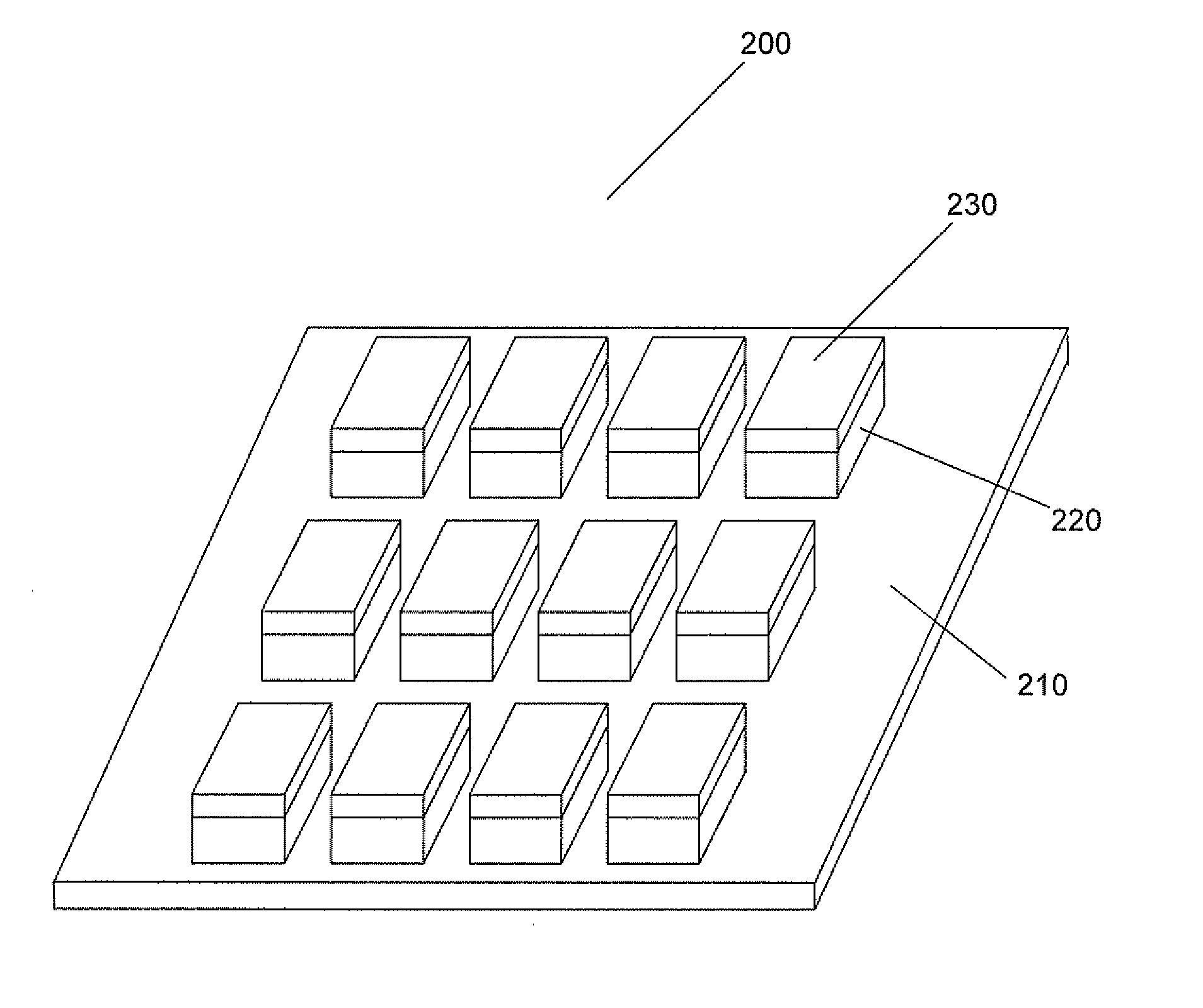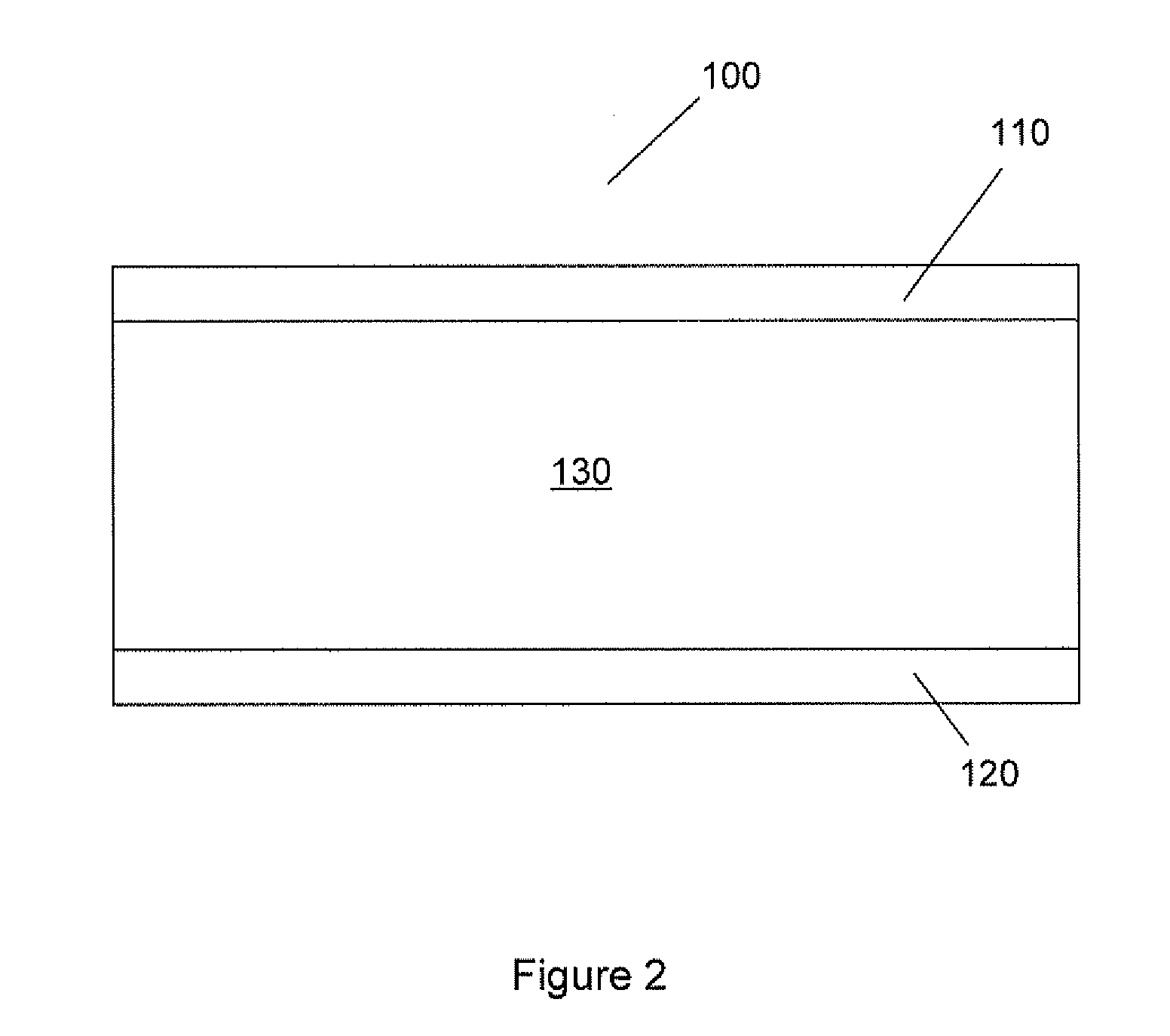Photoconductive materials and devices with internal photoconductive gain
a technology of photoconductive materials and optical imaging devices, applied in the direction of photometry, photometry using electric radiation detectors, instruments, etc., can solve the problems of uncertainty in the utility of meg in optical devices, digital imaging devices with poor ultraviolet spectrum detectivity, etc., and achieve high internal photoconductive gain
- Summary
- Abstract
- Description
- Claims
- Application Information
AI Technical Summary
Benefits of technology
Problems solved by technology
Method used
Image
Examples
example 1
Sample Preparation and Experimental Design
[0061]Nanoparticle synthesis, exchange, and processing were carried out as follows. Synthesis: PbO (0.9 g, 4.0 mmol), oleic acid (2.67 g, 9.50 mmol), and octadecene (4.73 g, 18.8 mmol) were mixed (solution A). Hexamethyldisilathiane (210 mL) was mixed with octadecene (10 mL) in a nitrogen glove box (solution B). Solution A (19.5 mL) was injected into a flask under argon and the temperature of the solution was raised to 120° C. under heavy stirring. Solution B was then injected into this flask, after which the solution was allowed to cool. When the temperature reached 35° C. the reaction was quenched with acetone (40 mL). The mixture was then washed repeatedly by suspension in toluene and precipitation in acetone.
[0062]FIG. 5 shows a TEM image of the nanoparticles used herein as well as an absorption spectrum. The materials exhibited a first excitonic absorption features at 945 nm. Three different sizes of nanoparticles were prepared by varyi...
example 2
Analysis of Results
[0068]FIG. 1(a) depicts the bands of a typical set of PbS colloidal quantum dots used herein. PbS has a bulk bandgap of 0.4 eV; the effective bandgap rises to 1.4 eV through quantum confinement in the 2 nm diameter dots investigated here. A shallow trap, resulting from PbSO3 formed by surface oxidation of PbS (26), lies just below the first confined electron state. The use of devices (27) with a single trap state lifetime facilitated interpretation of the results presented herein.
[0069]Device responsivity was determined by dividing photocurrent by the optical power incident on the device area. Internal photoconductive gain (number of registered electrons per absorbed photon) was calculated as Rhc / (qλA) where R is responsivity, h is Planck's constant, q is the electron charge, λ is the wavelength, and A is the absorption. Photocurrent dependence on illumination intensity was measured for light intensities up to 200 nW / cm2. Over this intensity range, for all wavelen...
example 3
Control Experiments to Investigate Possible Artifacts
[0074]An additional set of experiments were performed to address potential artifactual explanations of these findings. One hypothesis is that trap states could be nonuniformly distributed throughout the film, perhaps clustered closer to the air-film interface; shorter-wavelength light would then be substantially absorbed in these denser / deeper-trap regions. However, comparing internal gain spectra for devices illuminated from the top vs. the bottom, no dependence was found in the curves of FIGS. 6 and 7 on the side of optical incidence (as discussed below in reference to FIG. 9).
[0075]A second hypothesis is that, in the case of short-wavelength illumination, excited carriers could be captured directly to traps during the sub-picosecond timeframe prior to relaxation to the quantum-confined band edge without need of MEG and Auger-assisted ionization. This direct-ionization picture is incompatible with the observed universal normaliz...
PUM
 Login to View More
Login to View More Abstract
Description
Claims
Application Information
 Login to View More
Login to View More - R&D
- Intellectual Property
- Life Sciences
- Materials
- Tech Scout
- Unparalleled Data Quality
- Higher Quality Content
- 60% Fewer Hallucinations
Browse by: Latest US Patents, China's latest patents, Technical Efficacy Thesaurus, Application Domain, Technology Topic, Popular Technical Reports.
© 2025 PatSnap. All rights reserved.Legal|Privacy policy|Modern Slavery Act Transparency Statement|Sitemap|About US| Contact US: help@patsnap.com



